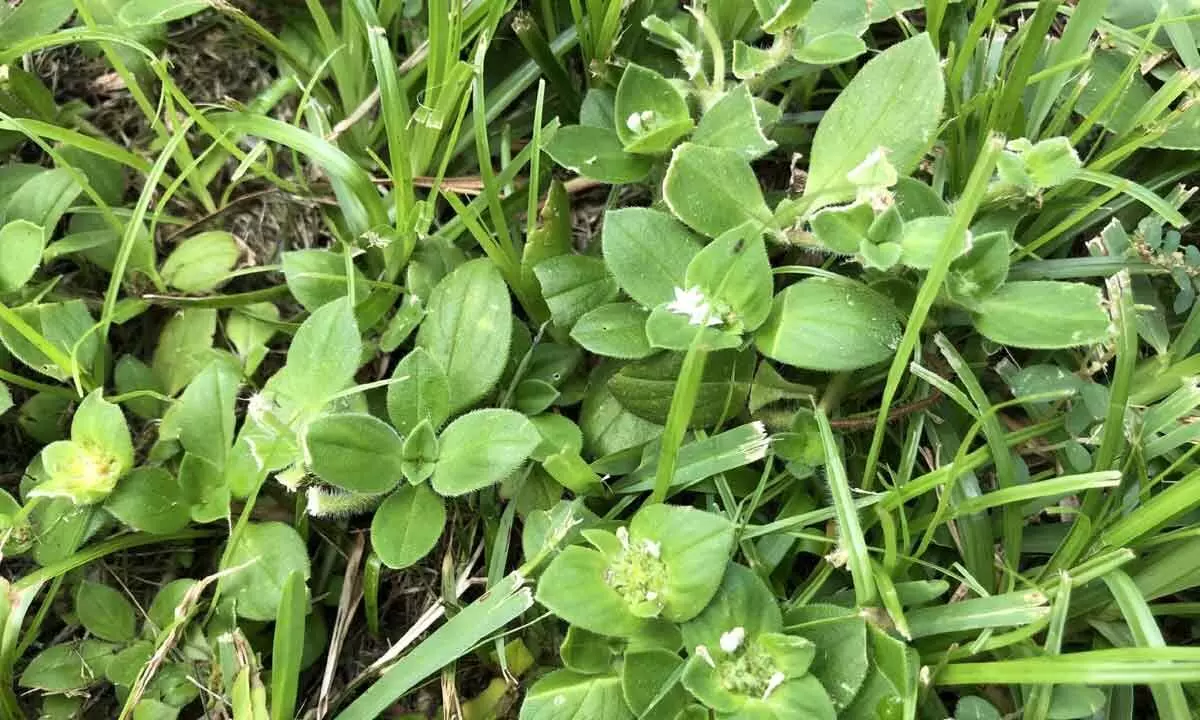Good, bad & sometimes beautiful

Good, bad & sometimes beautiful
Spring is here and many fields of crops are dotted with red poppies.
Catalonia (Spain): Spring is here and many fields of crops are dotted with red poppies. Farmers know that this is not a good sign, even if hundreds of people show up, mobile phones in hand, in search of the best photograph. Poppies, along with other species that grow in fields, can be a problem for crops if they appear in large numbers. We informally call them weeds, but what are they really and how bad are they?
Impersonators of cultivated plants
Weeds are generally annual or pluri-annual herbaceous plant species that are adapted to environments that are frequently disturbed, such as fields of crops. Their survival strategy is to resemble the crop as much as possible, to maximise their chances of survival and reproduction. To accomplish that, they germinate, flower, or mature at times similar to the crop, or they have a similar growth strategy. There are species that are highly adapted to the winter grain cycle, such as the poppy (Papaver roheas) and annual ryegrass (Lolium rigidum). Others, such as lamb's quarters (Chenopodium album) and redroot pigweed (Amaranthus retroflexus), are adapted to summer crops (for example, corn), which have rainwater or irrigation available. Woody fields such as olive groves and vineyards also have their own species like wall-rocket (Diplotaxis spp.).
In these cases, the plants are more adapted to management (harvesting, tilling) and not so much to the timing of the crop itself.
From the point of view of their adaptive strategy, weeds are plants that thrive in fertile environments that are regularly disturbed, a strategy defined as "type R", for "ruderal". Fields of crops are one of the primary places where these conditions occur. The high levels of fertility are provided by manure or fertilisers and the disturbances include working the soil, harvesting, chipping, and/or the application of herbicides.
Weeds: are they always bad?
Because they grow in the same places as crops, weeds compete for space, light, and resources such as water and nutrients. It is estimated that, worldwide, these plants can reduce harvests by up to 30 per cent. They are the organisms that cause the most losses, even more than pests and crop diseases. Apart from crop losses, weeds can reduce the quality of the harvested product (grain or forage contamination), transmit diseases to crops, and make agricultural tasks more difficult. However, some species and their seeds also contribute to providing ecosystem services.
For example, they contribute to biodiversity, host beneficial insects and pollinators, feed birds, and reduce erosion at certain times of the year. So, then, what determines if a plant is a weed? Although this is a complex question, the answer lies in the plant's density and time of growth, its competitiveness with the crop in question, and its seed production. The latter will determine the persistence of the problem in successive years. It is true that some very competitive species (like cleavers, Galium aparine) can, in turn, promote ecosystem services by harbouring a vast array of beneficial insects.
However, the more aggressive and dominant species are not usually the ones that are best at providing these positive effects.
Consequences of improper handling
For a plant to become a "weed," it must thrive in fields of crops, and that is where the paradox comes in: many of the most competitive and aggressive weeds are often this way due to inappropriate management. For example, an excessive use of herbicides along with poor crop rotation has promoted, in several species, the selection of biotypes that are resistant to these chemical products. This has aggravated their impact on crops and it makes control options more difficult.
Can we live with weeds?
To get out of this vicious circle, it is necessary to diversify – not just crops, but also soil-management tactics, weed-control tools, harvest times, and even mentalities. Over the medium and long term, the diversification of agroecosystems also results in the diversification of weed communities. Some recent studies confirm that the greater the diversity of weeds, the less competitiveness the resulting community has with the crop. The more species coexist in one place, the lower the probability is of there being a dominant species. It is worth asking ourselves if we could design weed communities that are less competitive. That is where we are at: trying to design productive agroecosystems in which management goes hand in hand with the ecological processes that govern the life of crops (and also weeds).
(The Conversation; Authors work at Universitat de Lleida, Catalonia, Spain)









